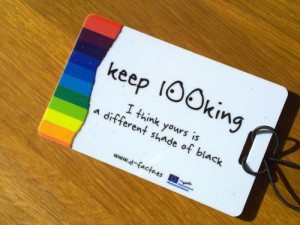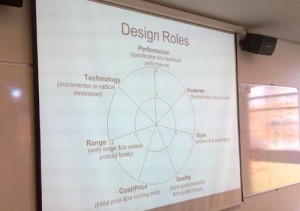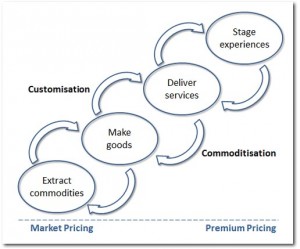1 April, 2012, by Francine Pickering
Maximising the Commercial Impact of Design
Post by Francine Pickering, Ingenuity
Workshop, 30th March 2012, review
Thomas Edison created the electric light bulb and then wrapped an entire industry round it. Without his ability to understand how people would want to use his invention, it would simply be a gimmick and the novelty would soon have worn off.
The importance of this kind of innovation and design thinking was a crucial lesson to be learned from this workshop. Design needs to be invested in as a part of your strategy.
Everything created by humans has been designed – that’s everything from products to services to experiences. So design has to have an impact on your business because you must sell products, services of experiences.
But what kind of commercial impact does it have? It’s just too easy to dismiss good design as a “nice to have” and neglect the effect that it can have on your profitability. This workshop from the Centre for Concurrent Enterprise shed some interesting light on this issue.
Referencing the 1993 Commercial Impacts of Design study, which provided, for the first time, quantified information on commercial returns for investing in design, and the Market Demands that Reward Investment in Design study from ten years later, it highlighted the benefits of this investment.
Design was used successfully by companies in the studies to:
- Move them into more profitable, quality-sensitive markets;
- To reduce costs and increase sales volume, especially for niche, high-quality products;
 The most successful design projects took a broad multi-dimensional approach and focused on product performance, features and build quality. Whilst design for styling and cost reduction played an important part in successful projects, focusing primarily on these was a feature of the less successful projects.
The most successful design projects took a broad multi-dimensional approach and focused on product performance, features and build quality. Whilst design for styling and cost reduction played an important part in successful projects, focusing primarily on these was a feature of the less successful projects.
With a significant proportion of the workshop audience working in services, we talked about the trend to create experiences from our offerings and saw how a couple of local businesses had designed experiences to help them sell their product or service.
- A tiling company redesigned their retail space to showcase design options, trained their staff to talk about design and added interior designers to their sales team.
- A web design company redesigned their workplace to create space for clients to visit, giving an implicit message of the design values they could expect from the work they commissioned and allowing them to be part of the ambience of a creative environment. Every visitor to the freshly designed office converted into a client.
 Design of services and experiences needs to be focused on building in value to the customer. Pine and Gilmore (1998) demonstrate how the transition to experience can facilitate a shift to premium pricing.
Design of services and experiences needs to be focused on building in value to the customer. Pine and Gilmore (1998) demonstrate how the transition to experience can facilitate a shift to premium pricing.
The design of experiences is a topic that will be covered in greater detail at a future workshop on 26th April 2012 and will cover:
- What kinds of experience there are;
- What experiences generate sales and customer loyalty;
- What methods there are for creating experiences.
One not to be missed.
More details on the coming workshop, Designing Engaging Customer Experiences
Resources:
Commercial Impacts of Design Study
Market Demands that Reward Investment in Design Study
No comments yet, fill out a comment to be the first

Leave a Reply